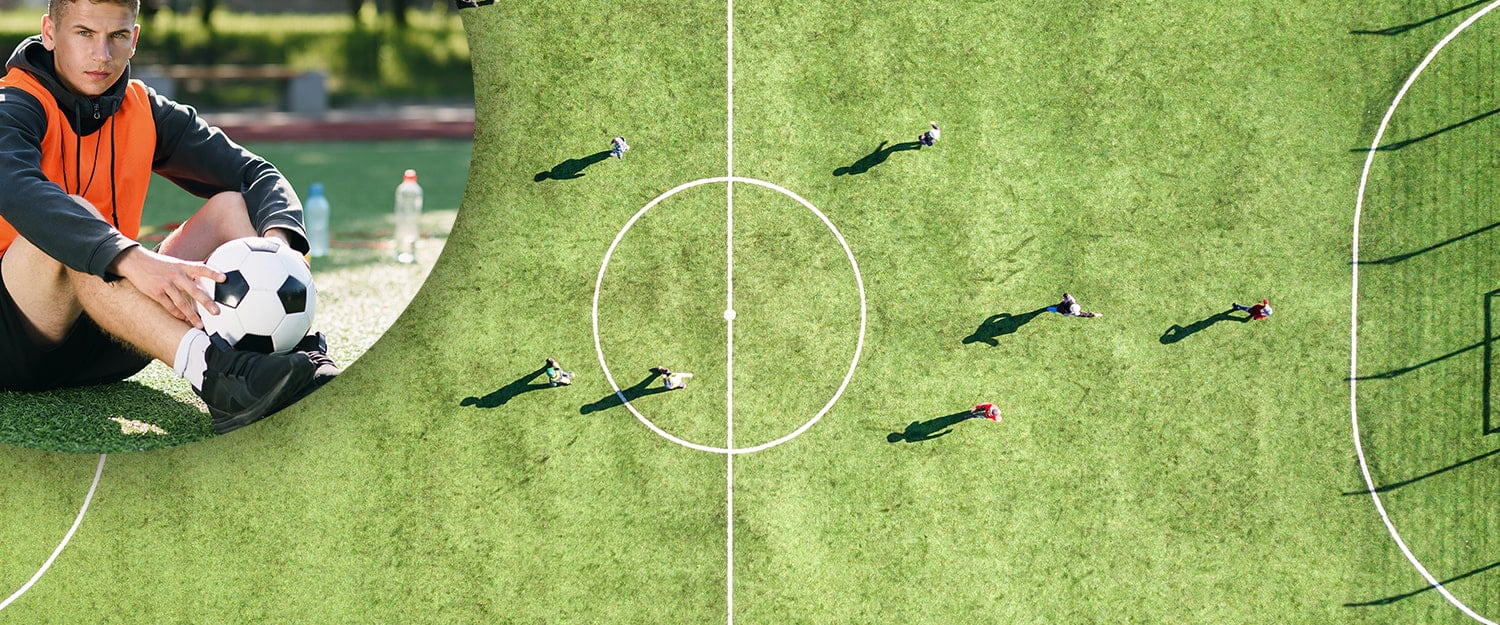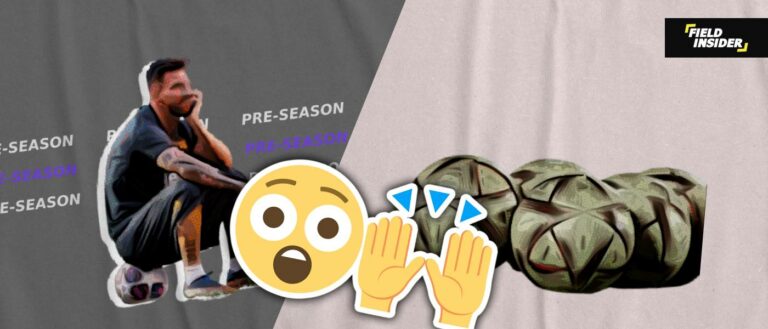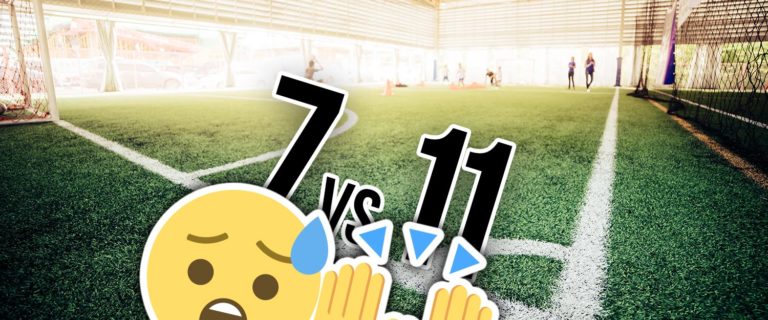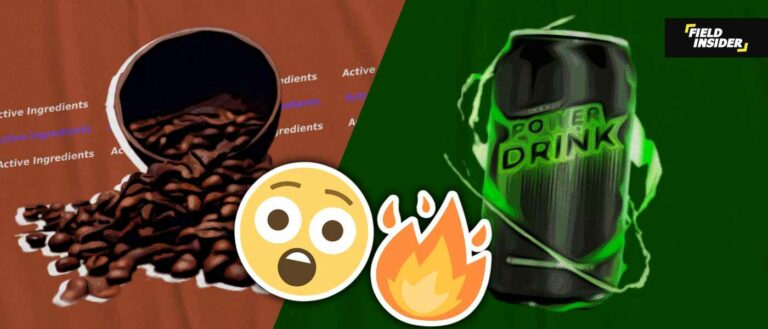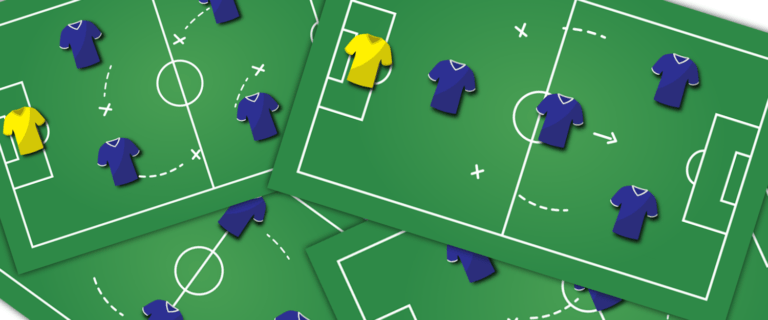What Are The 7-A-Side Football Rules? | A Complete Guide
Futsal is another format of the classic sport, football. Futsal is basically playing football, but with fewer players on both sides and also on a smaller surface. 7-a-side football is a branch of futsal. The name already indicates that 7-a-side football means football (or futsal) played with 7 players on both sides. This is also known as 7 v 7.
This article is about the details you need to know about this format of football and also some important 7-a-side rules every football lover needs to know. Every rule is thoroughly explained to help you understand better.
Some rules are similar to 11 a-side football. For example, the names of the positions and their roles are similar. These things do not change no matter which format of football you are playing. However, some rules such as goal size, pitch size and other technical aspects differ from 11 sided football.
This is why this article is your go to guide to understand every 7-a-side rule there possibly is. After reading this content, you are going to need no other source to explain 7-sided football to you. All you have to do afterwards is grab your cleats, go to the pitch and show everyone who the boss is.

Pitch Size
Let’s just start with a few very obvious ones. Pitch size is the first rule in our 7-a-side rules book. Everyone knows that 7 players on both sides cannot play on a bigger ground, or stadium. Therefore, pitch size in 7 sided games are very small when compared to 11 sided pitches.
This makes this format more fun, but also challenging if you are just new to 7-a-side football. Smaller pitch size means tight spaces and quick decision making.
Furthermore, 7 sided games are mostly played on turfs or courts. However, it is very rare to find 7-a-side games on hard courts. It usually happens with 5 or 6 sided football. 7 sided games can be played on grass as well and many local, small scale tournaments are actually held on grass surfaces.
The nature of the game remains the same and every player has to put in the similar amount of effort. Major differences occur in playing surfaces because turfs are always a steady and flat surface. However, grass pitches might not always be perfectly flat. This further challenges the technical ability of the players.
Goal Size
This is another obvious 7-a-side rule. The goal size is very small as compared to the proper pole size in 11-sided games. The reason for this is also very clear. It is very easy to score goals in bigger poles when playing on a smaller surface.
Therefore, small goal size is an added challenge to the players. It tests the player’s finishing abilities and players have to be really accurate in order to score a goal. Long range shots are often saved by the goalkeepers. However, some players are capable of scoring golazos from out wide even on smaller goals.
Player Equipment
It is already known that only 7 players can be active on the pitch at one particular time. However, football is a disciplined sport and it demands its players to be in a proper gear. Shin pads and even long socks are optional in this format of the game.
Long socks are now also avoided by a few players who play in top 11 sided football leagues. Therefore, players can play in ankle socks. In some places, players actually wear no-show socks underneath their grippers and play.
However, one rule which is a must to follow is that every player from the same team must be wearing the shirt of same colour. This helps to identify that all the players are from the same team. However, if this is also not possible then players wear bibs of same colour.
Bibs are provided by the management and the player does not need to have his own bib. 7-a-side rules are very strictly followed in proper leagues or tournaments. This is where majority of the teams wear their own kits so they look professional as bibs can make a team look casual.
Another strict 7-a-side rule is that no player is allowed to wear metal studs or studs in general. Some leagues or tournaments do allow the players to wear stud cleats, but metal studs are a big no. This is to prevent any possible injuries to any player while tackling.
Players with long hair arrange any special head wear on their own and the management is not responsible to provide that. Many players like to wear some band or any special arm wear. This is not disallowed unless it can be a potential harm to any player.
No Offside Rule
This is also a very obvious rule, yet many people get confused with it. There is no offside in 7-a-side rules. As a matter of fact, the off side rule is not applied to any other format except 11-a-side. 5-sided, 6-sided, 7-sided and 9-sided rules are played without any risk of a player getting offside, and this can be a potential reason we see strikers playing very close to the keeper.
This is also a very common tactic when a team desperately needs a goal. The striker stays close to the opposing goalkeeper while his defenders and midfielders feed him long balls. This is done when a team desperately needs to score. This play is a gamble which players make hoping that one long ball is going to connect well with either the head or the feet of the striker and is going to end up in the net.
The other team also gets troubled by this tactic because they have to either engage one defender with that particular striker or leave him free. Both are risky situations. Leaving him free can lead to a goal. Meanwhile, man marking him can leave a lot of space for the opposing midfielders.
Match Timings
A professional 11 sided game lasts for around 90 minutes. This is not the case in 7 sided football. According to 7-a-side rules, a game can last anywhere from 30 to maximum 40 minutes. This means that the half can either be of 15 or 20 minutes, not more than that.
30 minutes is the most common 7 sided game time and players get drained after just half an hour. This is because the physical demand in this format is very high. Every player has to cover some ground all the time. Therefore, 30 minutes time is very sufficient.
Substitutions
There is no restriction to how many squad members you can bring to a 7 sided game. However, according to 7-a-side rules for some leagues, every team can have only 10 men squad. This means 7 active players and 3 substitutions.
Subs are mostly rolling in 7 sided games. This means that every player can be subbed on or off again and again unlimited times. This is a major difference when compared to 11 sided football where one player who is subbed off cannot return to the field.
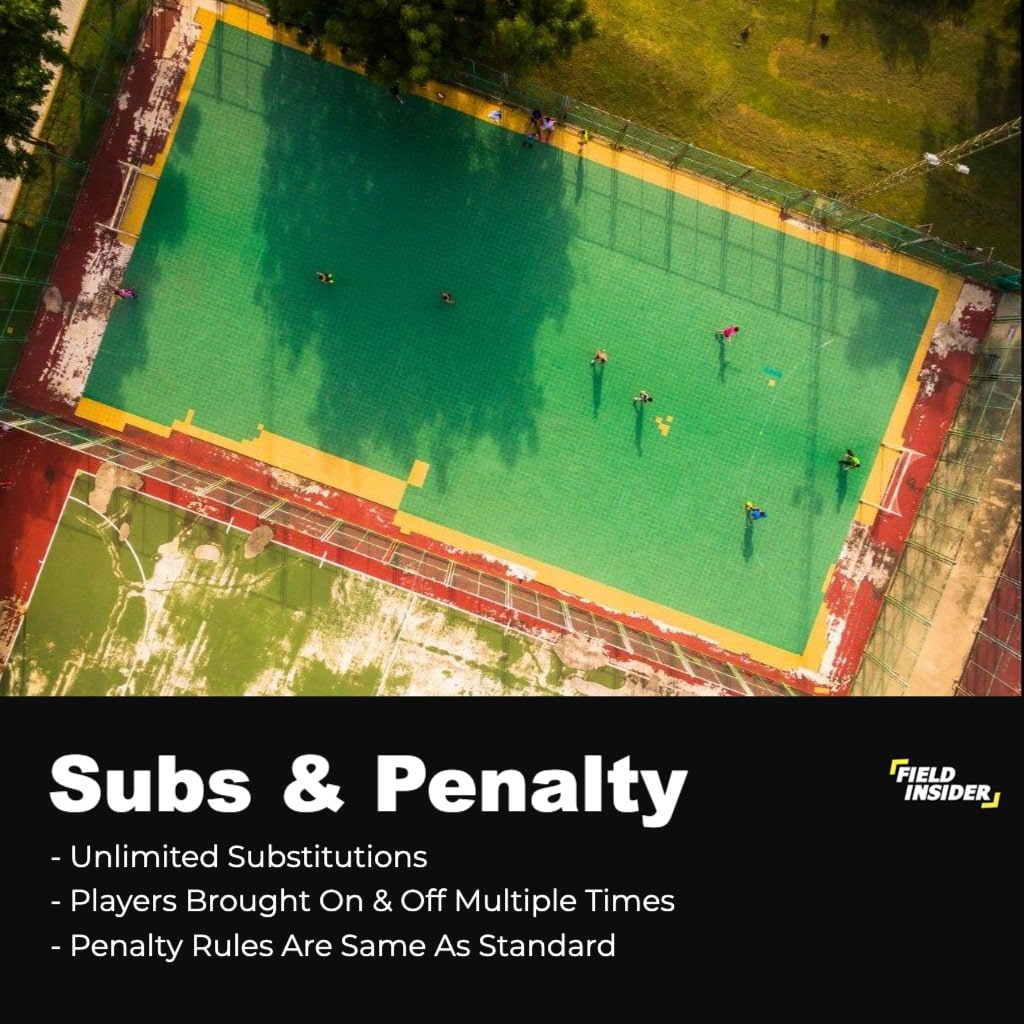
Penalty Area
The penalty rule is still applied. Any foul inside the box or a handball or a push can lead to a penalty kick. There is not much to explain because the fouls which lead to a penalty are similar in all formats. Any resistance or too much cross-questioning with the referee can lead to a yellow or red card.
Other General Rules
There are some other basic 7-a-side rules which are usually not known by many people. Some tournaments allow the back pass rule while others do not. If the back-pass rule is broken by a team, freekick is awarded to the other team. Furthermore, there is no half line limit. This means that the keeper can distribute the ball all the way to his striker. The keeper can also score a direct goal.
Lastly, some tournaments allow throw ins while others allow kick ins. This is not a fixed rule and the ref explains this before the team. If any player breaks this rule, then a retry is not given. The other team is then awarded with either of a kick or throw in.
Conclusion
These are the basic 7-a-side rules you need to know before you begin your journey in this sport. If you are already an active 7-a-side player, these 7-a-side rules are still going to help you understand the game better.


